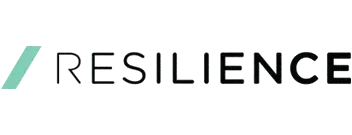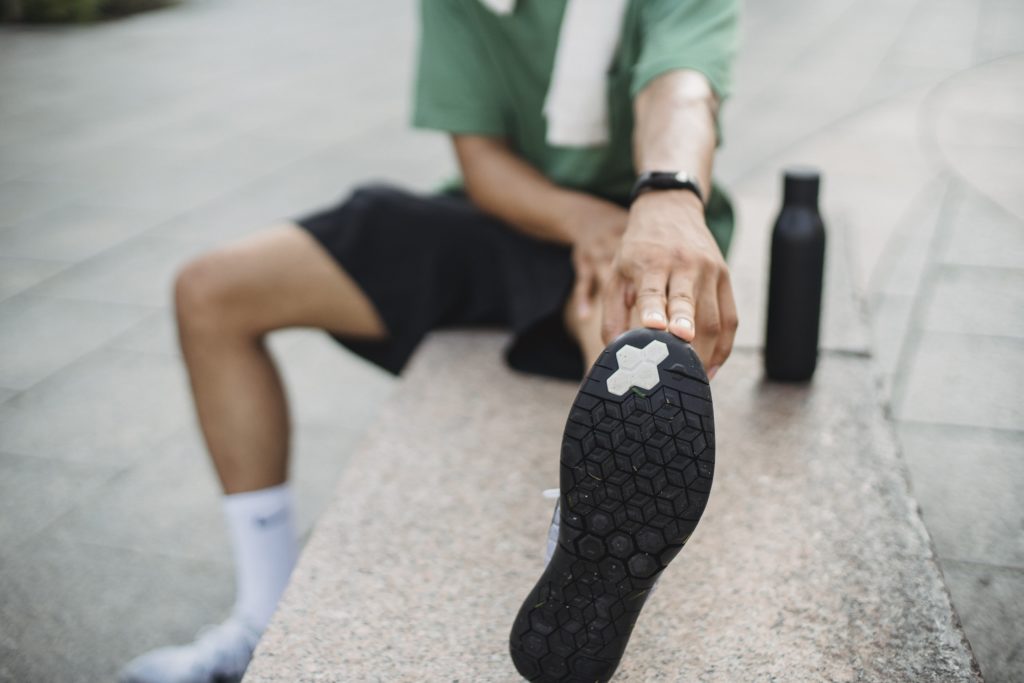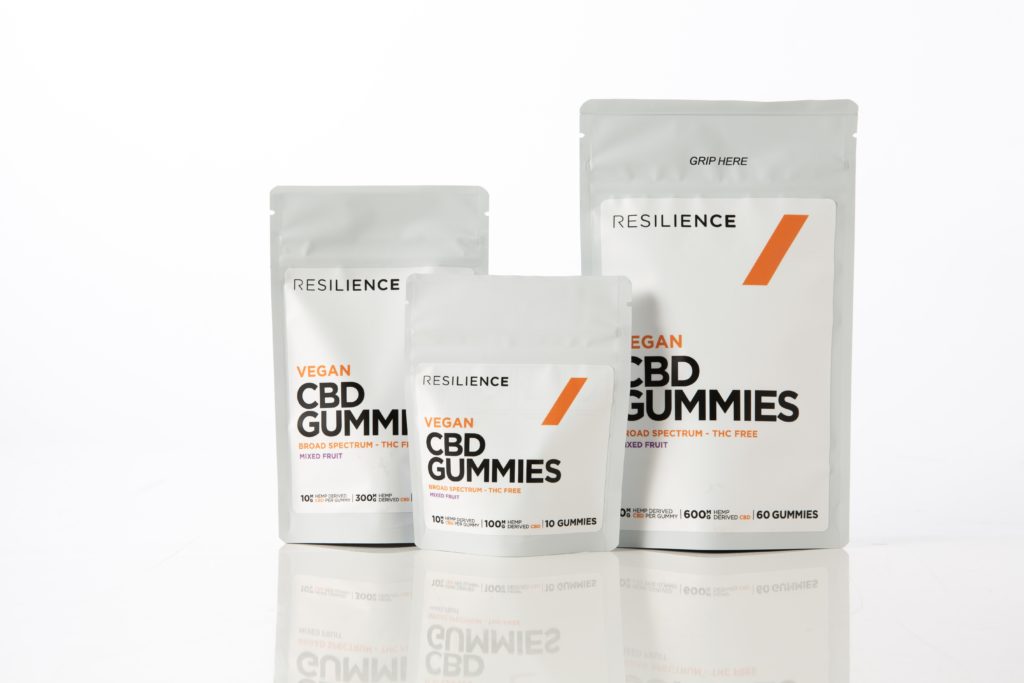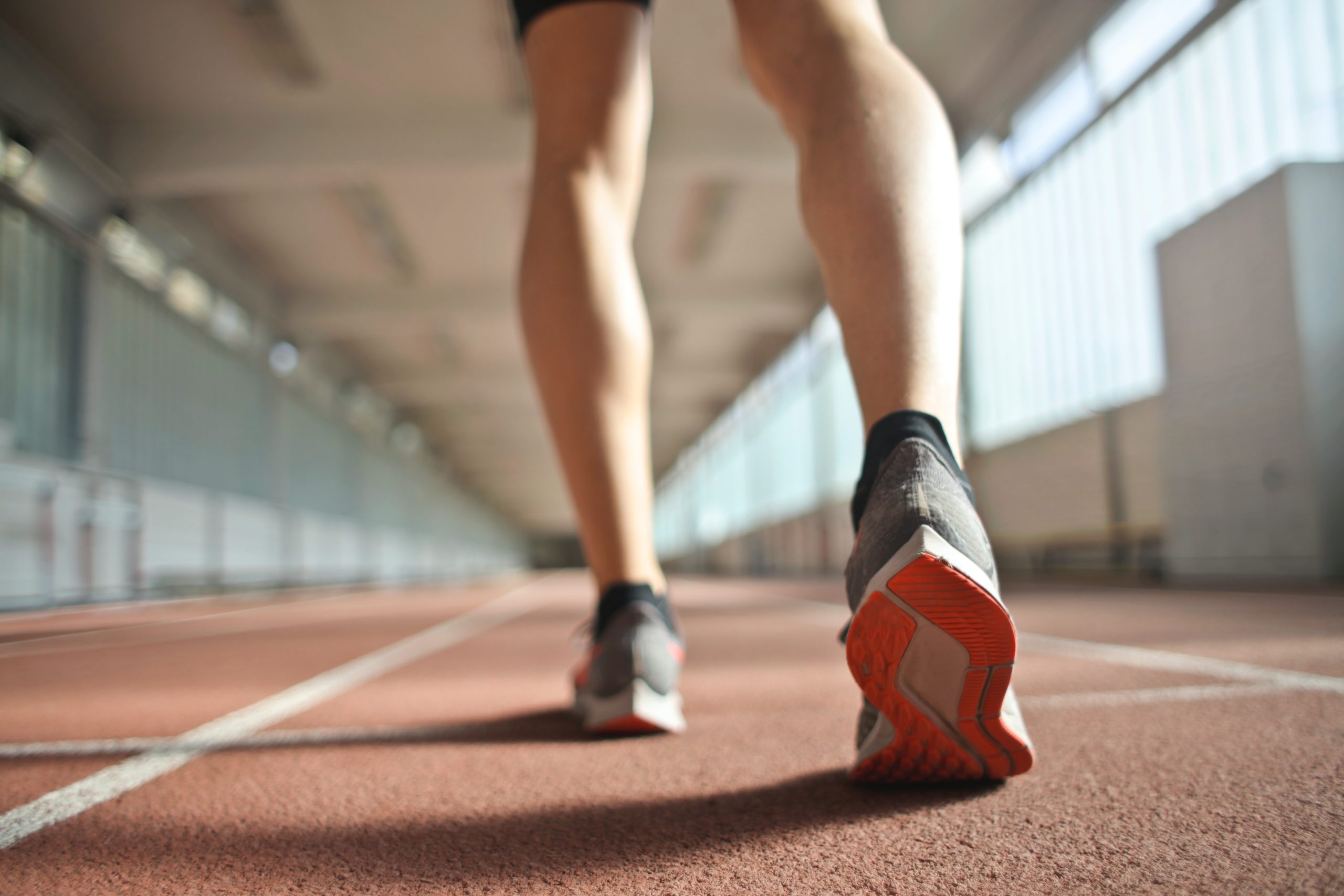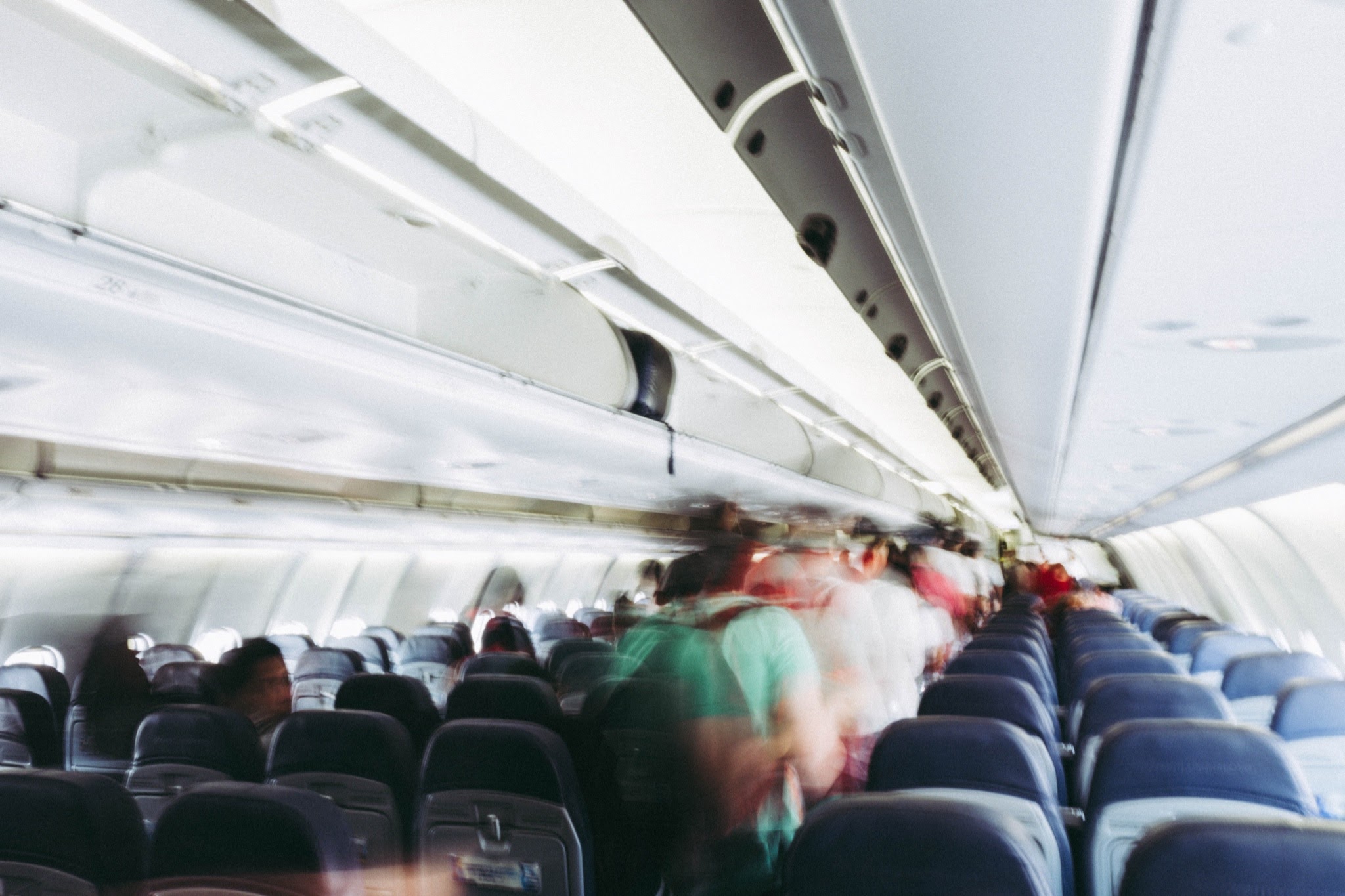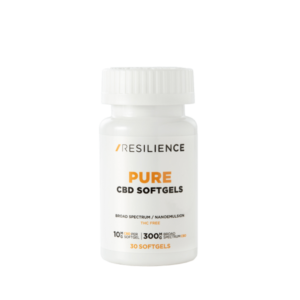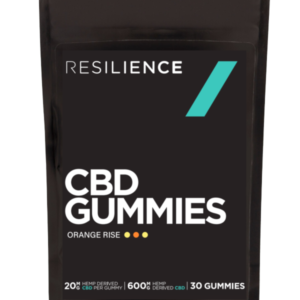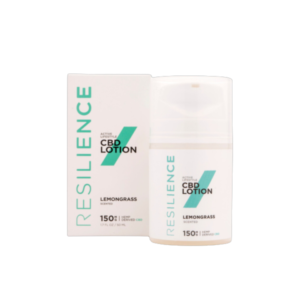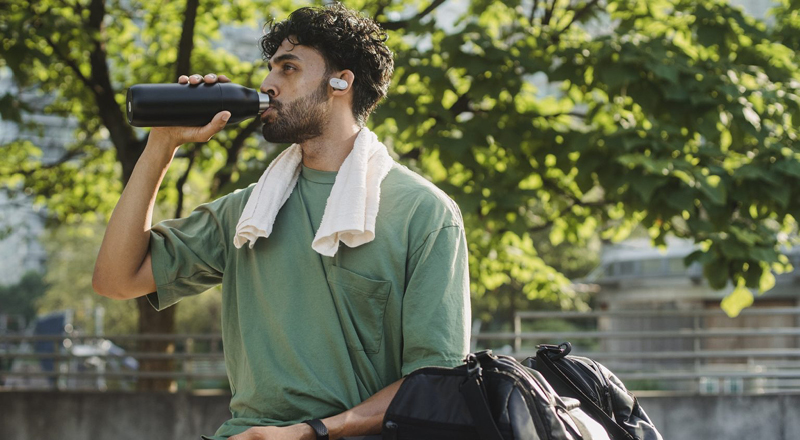
Making gains, eking out another set, and shaving seconds off your personal record. That’s what keeps athletes of all stripes motivated and coming back for more. Despite the hard work, you know how every drop of sweat brings you closer to the rush of victory or the triumph of a new milestone.
As an athlete, you’ve learned that progress isn’t possible without proper recovery. What goes into post-workout routines is a personal preference, but there are a few tried-and-true methods athletes and coaches stand by.
If you’re asking the question “what are CBD gummies?” and are curious about incorporating CBD products for inflammation into your post-workout ritual, we’ll help you understand why and how it could be a game-changer for both the immune system and inflammatory response.
Key Takeaways:
- Recovering after athletic performance can be just as critical as warming up and the actual workout. And CBD for inflammation or muscle soreness can help aid in speedy recovery.
- There are two main types of muscle soreness and CBD for muscle recovery can help you manage both.
- In addition to typical approaches to reduce post-workout soreness and the inflammatory response, CBD can provide an added boost of soothing support for joint discomfort.
- Taking CBD in gummy form 30 minutes before your workout can make an impact on performance and help you bounce back faster after a tough session.
If you’re ready to reach new heights by prioritizing performance and recovery with the aid of CBD gummies, this is the guide for you.
Understanding Muscle Discomfort
When you push yourself a bit too far while lifting or conditioning, chances are you’ve thought, I’ll pay for this later. Other times, the burn hits almost immediately and could have you calling it quits earlier than you would like.
As an athlete, you know that this is a natural part of honing athletic performance. Every achievement is thanks to this work. But while you know that post-workout aches and pains are a given, what’s actually happening to your muscles?
The savviest athletes understand why you feel the pain with those gains.
Fighting Inflammation
One telltale symptom of muscle soreness is inflammation. This swelling reaction has to do with the body’s natural recovery response. When you put strain on your muscles, you create small tears in the fibers. Your body sends in white blood cells and other fluids and enzymes to mend these tears.
In the shuffle of repairing your muscles, this mix also releases a byproduct called prostaglandins. It’s this compound—along with other fluid buildup—that causes the swelling and tenderness you know so well after a tough workout.
Types of Muscle Soreness
Immediate pain is never a good thing and could signal an injury, but some muscle soreness shows up quicker and sticks around longer. This occurs when our bodies are dealing with muscle fatigue as a result of tearing and inflammation based on two specific dynamics:
- Eccentric strain – The upward part of a muscle contraction is known as the concentric phase while the downward, eccentric motion is where muscles have to do the most stretching and contracting. The result is more oxidative stress and tearing, and perhaps more pain.
- DOMS – DOMS, or delayed onset muscle soreness, is the kind of pain that sneaks up on you a few hours or even a day or two after a workout. DOMS is tricky because this delayed discomfort can be more intense when muscles are worked eccentrically. DOMS presents a triple whammy effect with soreness, inflammation, and stiffness or weakness. Luckily, the whole ordeal should be done within one to three days after you feel the first twinge of achiness.
Common Recovery Approaches
Along with properly hydrating and refueling after a grueling workout, there are some well-known and dependable tactics for speeding recovery when you start to feel any nagging receptor signaling muscle soreness or joint stiffness.
- Stretching – Many athletes swear by stretching after workouts. While there’s no direct evidence that stretching reduces soreness, it can offer some recovery relief when you’re combating heavy, inflexible muscles after a workout.
- Foam rolling and massage – Some athletes choose a double-combo approach with static stretching and a foam rolling routine. You could even supplement foam rolling with light massage or scheduling a session with a professional. Some research shows that foam rolling can be a major tool in your arsenal against DOMS.
- Ice – Cold treatment is a tried-and-true method for fighting muscle inflammation. An ice pack or plunge in an ice bath, while definitely a shock to the system, can help reduce swelling in swollen muscles.
- Heat – Sometimes heat is best for sore muscles that are also unrelentingly stiff. Heat applications can promote relaxation in those muscles, which can help you avoid any further strain if you decide to pick up training the next day.
- Rest – One of the most logical things you can do for muscle aches is take a breather. Many athletes schedule rest days just like they schedule workouts.
- Active recovery – If you’d rather not rest or it doesn’t work within your specific training regimen to rest completely, an active recovery day is a good compromise. Choose an activity that is gentle and doesn’t employ the same muscles in the same way to keep blood flowing without adding strain.
- Pain relievers – When plagued by persistent swelling and stiffness and or pain, some athletes will turn to anti inflammatory medication for instant pain relief or topical muscle creams to speed up the recovery process.
Why CBD is Good for Athletic Recovery
One big item missing from that list of typical post-workout rituals is incorporating a proper CBD dosage for recovery by recognizing an elevated immune response. There are numerous reasons why you won’t want to exclude it from your routine. Whether in the form of CBD topicals, tinctures, or gummies, the proper CBD dosage can be hugely helpful in recovery and feeling stronger, faster.
Promotes Balance
When it comes to just how CBD can help tackle recovery, it’s all about the way it interacts with our ECS (Endocannabinoid System).
The Endocannabinoid System is a network of naturally-occurring CBD-like compounds (endocannabinoids) in our bodies. Endocannabinoids help support some of the most important functions of the body like energy, discomfort management, mood, sleep, and more. CBD itself is one of over hundreds of cannabinoids found in hemp plants. Together, CBD topicals, gummies, tinctures, and oils work with the ECS to create balance in our bodies.
And one area where this partnership shines is helping to reduce inflammation and aiding in pain management. These benefits are critical to everyday athletes who want to train smarter.
Helps to Address Inflammation Caused By The Immune System
Taking either CBD oil, CBD tincture, or CBD gummies is an effective way to address the oxidative stress you put on your body during a workout—and the body’s response with inflamed, achy, and stiff muscles. For athletes, this means, you can turn to:
- CBD for muscle spasms – Tight, inflamed muscles after a tough workout can lead to nagging cramping that affects your waking and sleeping hours. CBD can help to provide a soothing effect that relaxes and soothes swollen muscles to help alleviate cramping.
- CBD for joint pain – Joints aren’t immune to the rigors of challenging workouts. If you’re dealing with the combined discomfort of muscle inflammation, cramping, and joint pain, CBD can offer some much-needed pain management and reduction in inflammation.
Aids Restful Sleep
Sometimes, the hardest battle you fight isn’t on the track or on the field—it’s trying to sleep when wrestling with mild to acute inflammation and muscle soreness. Since your body can’t perform the restorative behind-the-scenes work it needs to during those critical hours, lost sleep means slower recovery for immune cells. So every “z” brings you a step closer towards your athletic goals.
CBD can help in pain management, which means it also helps promote a restful night of sleep. If you’re wondering when to take CBD for sleep, we encourage you to check out this guide to building a great nighttime routine with CBD.
Effective as a Stress-Management Tool
The adrenaline-laced and heart-pumping experience of your sport or athletic practice can be invigorating. But whether you’re a competitive diver or a quarterback, stress is inevitable to some degree in athletics. But if left unchecked, stress can hinder the way we sleep, work, eat, and perform athletically.
CBD has a calming effect on our nervous system, which makes it a valuable resource for stress management. And reducing stress can have a far-reaching effect on your immune response and overall wellness.
When you feel more relaxed, you’ll sleep better and perform better on and off the field.
Fosters Stamina
What happens when you recover faster and feel stronger? You have more stamina and longevity to push yourself further.
Incorporating CBD into your self-care routine means that you’re less likely to be hindered by slow recovery and discomfort. And that leaves more time for getting back to the gym, track, or pool and puts you one step closer to your next athletic achievements.
Incorporating CBD Into Your Recovery Routine
If you’re ready to set yourself up for workout and post-workout success with CBD, you have many options. You could try incorporating CBD into your recovery routine with:
- CBD oils – Whether you choose a full-spectrum or CBD isolate option, CBD oil can be a convenient and effective part of your daily routine alone or in tandem with CBD gummies.
- CBD lotions and creams – It’s nice to pamper yourself after a grueling workout. Topical CBD products such as lotions and creams offer targeted contact with sore muscles and joints, and the moisture-rich ingredients skin loves.
- CBD bath products – Incorporating CBD into a recovery bath is another immersive way to benefit from its soothing and restorative effects.
- CBD capsules – If you prefer the convenience of a capsule form, CBD softgels offer the effectiveness you’re looking for in a fast pill-like delivery method.
Make CBD a part of your pre-workout or pre-game tradition to get yourself focused and poised for a great match, session, and recovery.
Bounce Back with Resilience CBD
Recovery is just as important to athletic performance as the main event. Which is why we’ve formulated our CBD products to help you beat personal bests. For busy athletes looking for pre-workout boosts and post-workout benefits, Resilience CBD gummies are a homerun.
They’re conveniently packaged for portability and don’t require any guesswork. Just take one to two CBD gummies 30 minutes before your workout. It’s as simple as that.
Learn more about how Resilience CBD gummies and products can help you progress and recover like a champ.
 Written by: Michael Tatz | Linkedin
Written by: Michael Tatz | Linkedin
Michael Tatz is the Co-Founder of Resilience CBD, and a passionate leader in the health & fitness world helping others rise to and crush their wildest goals. A former Division 1 college wrestler, Army Officer, and investment manager at Goldman Sachs, he has pushed his body and mind to the limits on the mats, dressed in camo, and in the boardroom.
Today, he spends his time leading Resilience CBD to develop the absolute best recovery products for athletes everywhere. Resilience was founded after CBD personally impacted Michael’s life, and the brand was built to partner with everyday athletes in pursuit of conquering their most difficult challenges, rebounding after their toughest performances, and rising to their goals that once seemed impossible.
Sources:
Livestrong. It’s Not Swell to Have Swollen Muscles After a Workout, but There Are Simple Remedies. https://www.livestrong.com/article/75670-swell-after-workout/
Verywell Health. Treating Muscle Soreness After Exercise. https://www.verywellhealth.com/treat-muscle-soreness-after-exercise-2549705
U.S. National Library of Medicine, National Institutes of Health. Foam Rolling for Delayed-Onset Muscle Soreness and Recovery of Dynamic Performance Measures. https://www.ncbi.nlm.nih.gov/pmc/articles/PMC4299735
Healthline. A Simple Guide to the Endocannabinoid System. https://www.healthline.com/health/endocannabinoid-system
